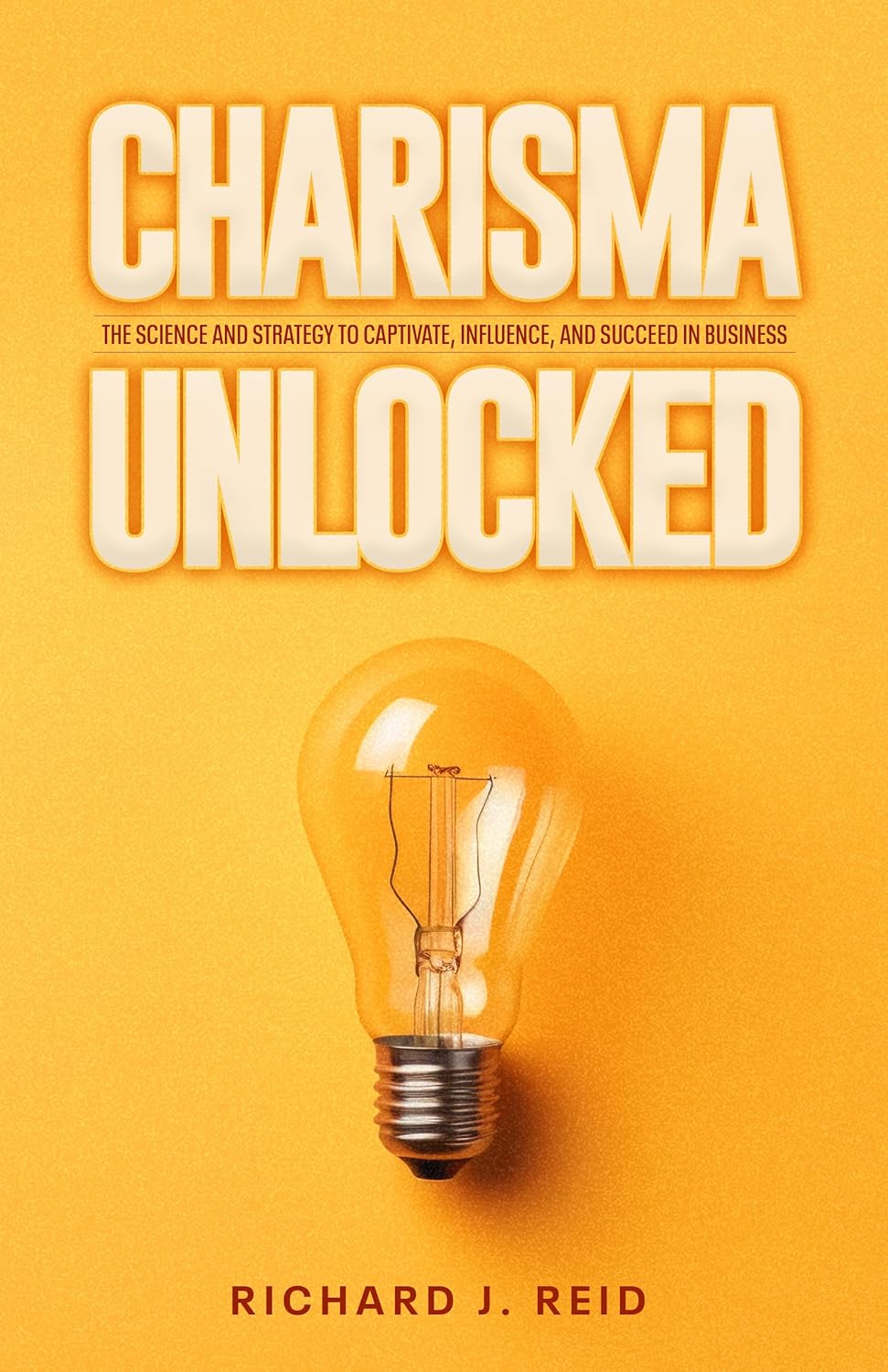Executive Summary
In an intensely competitive marketplace, exceptional customer experience (CX) is increasingly recognised as the most powerful lever for building lasting brand loyalty. Research consistently shows that businesses delivering superior experiences not only win customer hearts but also achieve higher retention rates, greater lifetime value, and sustainable profitability. This whitepaper explores how UK organisations can transform their customer experience strategies to foster meaningful relationships, encourage repeat business, and build loyal brand advocates. Drawing on industry research, best practices, and real-world examples, it provides a practical framework for business professionals seeking to make CX a core differentiator and strategic advantage.
SEO focus: customer experience, brand loyalty, customer retention, CX strategy, customer journey, customer loyalty, UK business, customer satisfaction.
Table of Contents
- Introduction: The CX-Loyalty Imperative
- The Business Case: Why CX Drives Brand Loyalty
- Understanding Brand Loyalty in the Digital Age
- Core Pillars of Excellent Customer Experience
- Mapping and Improving the Customer Journey
- Leveraging Data and Personalisation
- The Role of Employee Engagement in CX Delivery
- Omni-Channel Experience: Meeting Customers Where They Are
- Technology and Innovation in Customer Experience
- Measuring and Acting on Customer Feedback
- Handling Complaints and Turning Moments of Truth into Loyalty
- Case Studies: Leaders in UK Customer Experience
- Implementation: Building a CX-Driven Organisation
- Conclusion: Elevate CX, Elevate Loyalty
- Further Resources and References
Introduction: The CX-Loyalty Imperative
Customer experience (CX) is more than a customer service buzzword. It is the sum of every interaction a consumer has with your brand—from the first web search or advert encounter, to after-sales support and problem resolution. In the digital age, customers have unprecedented choice and power; their expectations for seamless, memorable, and personalised experiences are higher than ever.
According to research by PwC UK, 73% of British consumers state that CX factors—such as speed, convenience, knowledgeable help, and friendly service—are crucial in influencing their brand loyalty. Poor experiences quickly erode trust and drive customers to competitors. Conversely, remarkable experiences create emotional bonds, translating into repeat business and advocacy.
This whitepaper provides business professionals with an actionable roadmap to transform CX and unlock long-term brand loyalty for competitive advantage.
The Business Case: Why CX Drives Brand Loyalty
Quantifying the CX Impact
- Retention and Profitability: According to Bain & Company, increasing customer retention by just 5% can increase profits by up to 95%.
- Word-of-Mouth: Research by Deloitte Digital notes that 62% of loyal customers advocate for brands they love, driving new customer acquisition at reduced cost.
- Reduced Churn: The Institute of Customer Service (UK) finds that customers who rate their experiences highly are seven times less likely to switch to another provider.
- Price Premium: Exceptional CX allows brands to command higher prices; 86% of consumers are willing to pay more for better experiences (SuperOffice).
The Cost of Poor CX
- It takes 12 positive experiences to compensate for a single unresolved poor one ([Ruby Newell-Legner]).
- One in three customers will leave a brand after one bad experience ([PwC UK]).
- Negative word-of-mouth can erode brand reputation rapidly in the era of social media.
Understanding Brand Loyalty in the Digital Age
Brand loyalty has evolved. Today’s loyalty is not just transactional—based on points or discounts—but experiential and emotional. Modern customers value:
- Consistency: Reliable delivery across all channels.
- Personalisation: Experiences tailored to their needs and preferences.
- Trust: Feeling understood, respected, and safe.
- Shared Values: Alignment with the brand’s mission or ethos.
- Ease: Fast, convenient, and frictionless processes.
A KPMG study found that brands achieving emotional connections with their customers enjoy two times more loyalty than those who do not.
Core Pillars of Excellent Customer Experience
- Customer-Centric Culture
Successful organisations prioritise the customer in all decisions. CX is embedded in values, strategy, and daily operations—from the boardroom to front-line staff. - Seamless Processes
Every touchpoint should be effortless, efficient, and coordinated. Financial services leaders like First Direct set standards for seamless onboarding and support. - Proactive and Empathetic Communication
Customers value timely, clear, and human communication throughout their journey, especially at moments of uncertainty or difficulty. - Consistency Across Channels
Experiences should feel familiar and dependable, regardless of whether the interaction is digital, in-person, or by phone. - Empowered Employees
Front-line teams must be equipped and authorised to resolve issues and delight customers in real time.
Mapping and Improving the Customer Journey
Understanding the end-to-end customer journey is fundamental to identifying pain points and opportunities.
Steps in Journey Mapping
- Persona Development
- Create detailed profiles based on key customer segments.
- Touchpoint Identification
- Map every interaction, including digital (web, social, app), physical (retail, phone), and emotional moments.
- Pain Point Analysis
- Identify sources of friction, confusion, or dissatisfaction.
- Experience Optimisation
- Redesign problematic steps, introduce improvements, and ensure cross-functional coordination.
- Test and Iterate
- Use journey analytics and customer feedback to continuously refine the experience.
For practical guides, use CX Network’s journey mapping resources.
Leveraging Data and Personalisation
Personalisation is a key driver of customer loyalty. Customers expect brands to understand their preferences and deliver relevant experiences.
Data-Driven CX
- Collect: Gather data ethically through touchpoints, feedback, and transactional history.
- Analyse: Use analytics to discover trends, segment customers, and predict needs.
- Act: Deliver personalised offers, proactive service, and communication aligned to individual preferences.
Example: John Lewis & Partners leverage purchase and online behaviour data to offer tailored recommendations and exclusive offers.
Ethical Consideration: Personalisation must respect privacy laws such as GDPR. Only use data customers consent to share and maintain transparency in how information is used.
The Role of Employee Engagement in CX Delivery
Engaged employees are essential to delivering consistent, positive customer experiences.
Why Engagement Matters
- Employees who feel valued are more committed to customer satisfaction.
- Engaged staff are 21% more productive and demonstrate higher service quality (Gallup).
- Emotional contagion: Positive attitudes in staff transfer directly to customer perceptions.
Building a CX-Driven Workforce
- Recruit for Attitude: Hire for customer empathy and service orientation.
- Train Continuously: Equip staff with CX knowledge, communication, and problem-solving skills.
- Empower Ownership: Allow employees to resolve issues on the spot.
- Recognise and Reward: Celebrate excellent service and customer feedback.
The Institute of Customer Service provides tools to measure and improve employee engagement in a CX context.
Omni-Channel Experience: Meeting Customers Where They Are
Modern customers use multiple channels along their journey—web, app, chat, phone, and in-person. Exceptional CX seamlessly connects these touchpoints.
Creating an Omni-Channel Strategy
- Unified Data: Integrate customer information across platforms for a single view.
- Channel Fluidity: Allow customers to switch channels without repeating themselves.
- Consistent Design and Tone: Ensure branding and communication style match across all touchpoints.
- Responsive Service: Offer timely support in each channel, including social media.
- Self-Service Options: Empower customers to resolve common queries independently via FAQs, chatbots, and account portals.
UK Example: Marks & Spencer has integrated in-store, online, and app experiences, offering seamless click-and-collect, returns, and customer support.
Technology and Innovation in Customer Experience
Digital transformation is reshaping CX. Leading organisations are investing in:
- Artificial Intelligence (AI)
- Chatbots: 24/7 instant support (e.g., HSBC’s Amy)
- Personalisation Engines: Real-time recommendations and content tailoring.
- Sentiment Analysis: Automatic detection of customer emotion in communications.
- Automation
- Process Automation: Fast, error-free routine tasks (account openings, renewals, confirmations).
- Proactive Notifications: Real-time status and alert systems.
- Customer Data Platforms (CDP)
Provide a unified customer view, enabling more meaningful interactions and better decision-making. - Enhanced Self-Service
- Virtual assistants, knowledge bases, advanced IVR for faster solutions.
- Customer Feedback Tools
- Real-time surveys, Net Promoter Score (NPS), and closed feedback loops.
See TechRadar’s customer experience tech roundup.
Measuring and Acting on Customer Feedback
Ongoing feedback and analytics are critical to CX improvement.
Key Metrics
- Net Promoter Score (NPS): Measures likelihood to recommend.
- Customer Satisfaction (CSAT): Quantifies experience at touchpoints.
- Customer Effort Score (CES): Gauges ease of transaction.
- Churn and Retention Rates: Track loyalty over time.
Feedback Channels
- Post-interaction surveys (email, SMS, app)
- Social listening (monitoring brand mentions and reviews)
- Focus groups and interviews
- In-app or website feedback widgets
Closed-Loop Process:
- Collect feedback in real time.
- Analyse for trends and emerging pain points.
- Respond directly to dissatisfied customers.
- Feed insights into continuous process improvement.
Qualtrics UK and SurveyMonkey offer robust tools for customer feedback management.
Handling Complaints and Turning Moments of Truth into Loyalty
Handled well, complaints can become powerful loyalty drivers:
- Empathise Immediately: Demonstrate genuine understanding.
- Take Ownership: Ensure a single point of contact for resolution.
- Act Fast: Speed of solution is as important as the solution itself.
- Over-Deliver: Where appropriate, offer compensation or additional support beyond what’s required.
- Learn and Improve: Treat every complaint as an insight source to prevent future issues.
According to Ofcom, UK consumers value swift, honest, and transparent complaint resolution over perfection.
Example: John Lewis’s “Never Knowingly Undersold” promise turns potential complaints into proactive customer advocacy by rectifying issues quickly and exceeding expectations.
Case Studies: Leaders in UK Customer Experience
- John Lewis & Partners
- Consistently placed #1 in the UK Customer Satisfaction Index (UKCSI).
- Focus on recruitment, empowerment, and recognition of staff.
- Seamless omni-channel journeys, robust complaint resolution, and a strong sense of personal service drive loyalty.
- First Direct
- Frequently top-ranked for customer service in banking (Which?).
- Digital innovation paired with human-centric service.
- 24/7 UK-based support, proactive communications, and flexible problem resolution.
- O2 / Virgin Media
- Leading telecoms brands in UK CSI.
- Rigorous journey mapping, data-driven personalisation, and rapid response to feedback.
- Strong community engagement programmes driving emotional loyalty.
- Marks & Spencer
- Pioneers in integrating digital and physical experiences.
- Transparent product information, user-friendly digital interfaces, and seamless click-and-collect.
Implementation: Building a CX-Driven Organisation
- Leadership Commitment
- CX must be a board-level priority with owner accountability.
- Cross-Functional Alignment
- Break down silos—CX is everyone’s responsibility, not just service or sales.
- Technology Investment
- Ensure systems enable, not hinder, customer-centric journeys.
- Continuous Learning
- View CX as a process of ongoing iteration, feedback, and improvement.
- Develop organisation-wide skills in empathy, digital fluency, and problem-solving.
- Metrics and Incentives
- Make customer-centric KPIs part of performance management.
- Cultural Embedding
- Share powerful customer stories.
- Celebrate teams and individuals who delight customers.
- Recruit and promote based on customer-centric values.
For guidance, see the CIPD’s customer service resources.
Conclusion: Elevate CX, Elevate Loyalty
Customer experience is now at the heart of brand loyalty. Organisations that invest in understanding, mapping, and continuously refining CX gain a sustainable edge over the competition. By aligning people, processes, and technology around the needs and expectations of modern customers, UK businesses can convert buyers into lifelong advocates. In an era where customer power is paramount, the path to growth runs through experience.
Further Resources and References
- Institute of Customer Service: Research & Insight: Institute of Customer Service
- PwC UK: Customer Experience: PwC UK
- CX Network: Journey Mapping: CX Network
- CIPD: Service and Experience: CIPD
- Qualtrics UK: Qualtrics UK
- John Lewis Partnership: John Lewis Partnership
- First Direct: First Direct
- TechRadar: Customer Experience Software: TechRadar
- Ofcom: Complaints Handling: Ofcom
- KPMG: Customer Experience Excellence: KPMG
- Gallup: Workplace Engagement: Gallup
- Deloitte Digital: Brand Loyalty: Deloitte Digital
- SuperOffice: Customer Experience Statistics: SuperOffice










